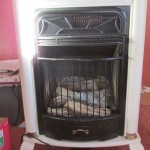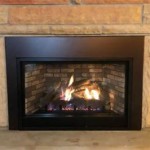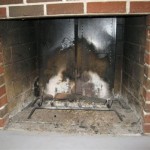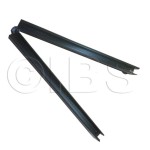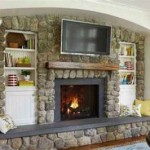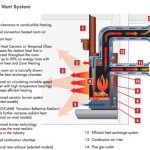Installing a Fireplace in a House Without One
Adding a fireplace to a home can enhance its ambiance, provide warmth, and increase its value. However, many existing homes lack this desirable feature. For those seeking to install a fireplace in a home without one, the process involves careful planning, skilled execution, and adherence to local building codes. This article outlines the key steps involved in installing a fireplace, focusing on the essential considerations and necessary procedures.
1. Planning and Design
The journey to installing a fireplace begins with meticulous planning and design. This initial phase involves several crucial steps:
A. Determining Feasibility: Before embarking on the project, it is vital to assess the feasibility of installing a fireplace in the chosen location. Factors to consider include:
- Structural integrity: The wall or space selected must be able to support the weight of the fireplace.
- Chimney access: A chimney is essential for venting smoke and gases. Evaluate existing chimney infrastructure or determine the need for a new one.
- Accessibility: Ensure adequate access for installation and future maintenance.
B. Location Selection: Selecting the ideal fireplace location is critical to maximizing its aesthetic appeal and functionality. Consider:
- Architectural style: Choose a fireplace style that complements the home's aesthetic.
- Room layout: Select a location that allows for comfortable seating and optimal heat distribution.
- Safety considerations: Position the fireplace away from flammable materials.
C. Fireplace Type: The type of fireplace to install depends on personal preferences, budget, and the home's structure. Common options include:
- Traditional fireplaces: These are the most classic type, typically fueled by wood or gas.
- Gas fireplaces: They offer convenience and ease of use, often with remote control options.
- Electric fireplaces: These are energy-efficient and require minimal installation.
- Fireplaces with inserts: Inserts are installed within an existing fireplace opening, enhancing efficiency and safety.
2. Obtaining Permits and Building Codes
Once the design and location are finalized, it is crucial to obtain the necessary permits and adhere to local building codes. This step ensures compliance with safety standards and minimizes potential risks. Contact the local building department for specific requirements, which may include:
- Building permit: A permit is usually required for any structural modifications or new construction.
- Chimney inspection: Ensure the chimney is in good condition and meets safety standards.
- Fireplace installation inspection: A final inspection may be required to ensure proper installation and compliance with codes.
It is imperative to involve licensed professionals throughout this phase to ensure compliance with all regulations.
3. Installation Process
The actual installation process requires skilled labor and a thorough understanding of the chosen fireplace type. The following steps provide a general overview:
A. Framing and Firebox Installation: The first step involves building a frame to support the fireplace. This usually involves using fire-resistant materials and ensuring proper insulation. The firebox, which houses the fire, is then installed within the frame.
B. Chimney Construction or Modification: If a new chimney is required, it must be constructed according to building codes and specifications. Existing chimneys may need adjustments or repairs to accommodate the new fireplace.
C. Firebox and Damper Installation: Once the chimney is in place, the firebox and damper are installed within the frame. The damper controls the airflow and prevents smoke from escaping into the living space.
D. Hearth and Surround Installation: The hearth, which provides a solid surface for the fireplace, is installed, usually made of stone or tile. The surround, which surrounds the fireplace opening, can be constructed from various materials, such as wood or stone.
E. Finishing Touches: The final step involves finishing the fireplace with the desired materials, such as a mantel, tile, or stone. The fireplace is then connected to the gas or electrical source (if applicable) and tested for proper functionality.
Remember that this process can vary depending on the specific fireplace type and installation requirements. Hiring a qualified fireplace installer is highly recommended to ensure safe and proper installation.
Installing a fireplace in a home without one is a significant undertaking requiring careful planning, professional expertise, and adherence to building codes. By following the steps outlined above, homeowners can transform their living spaces with a fireplace that adds warmth, ambiance, and value.

Your Home Doesn T Have A Fireplace And You Want To Add One

5 Types Of Fireplaces For Apartments Homes Without Chimneys Modern Blaze

How To Install Fireplace At Your Home Happho

4 Things Every Homeowner Should Know Before Installing A Fireplace

How To Remove A Fireplace In 8 Steps

Zero Clearance Vs Prefabricated Fireplace Full Service Chimney

I Built A Fireplace Easier Than Thought

16 Empty Fireplace Ideas How To Style A Non Working

Simple Guide To Creating A False Chimney T In New Build Property

How To Install A Gas Fireplace Diy Built In
Related Posts


